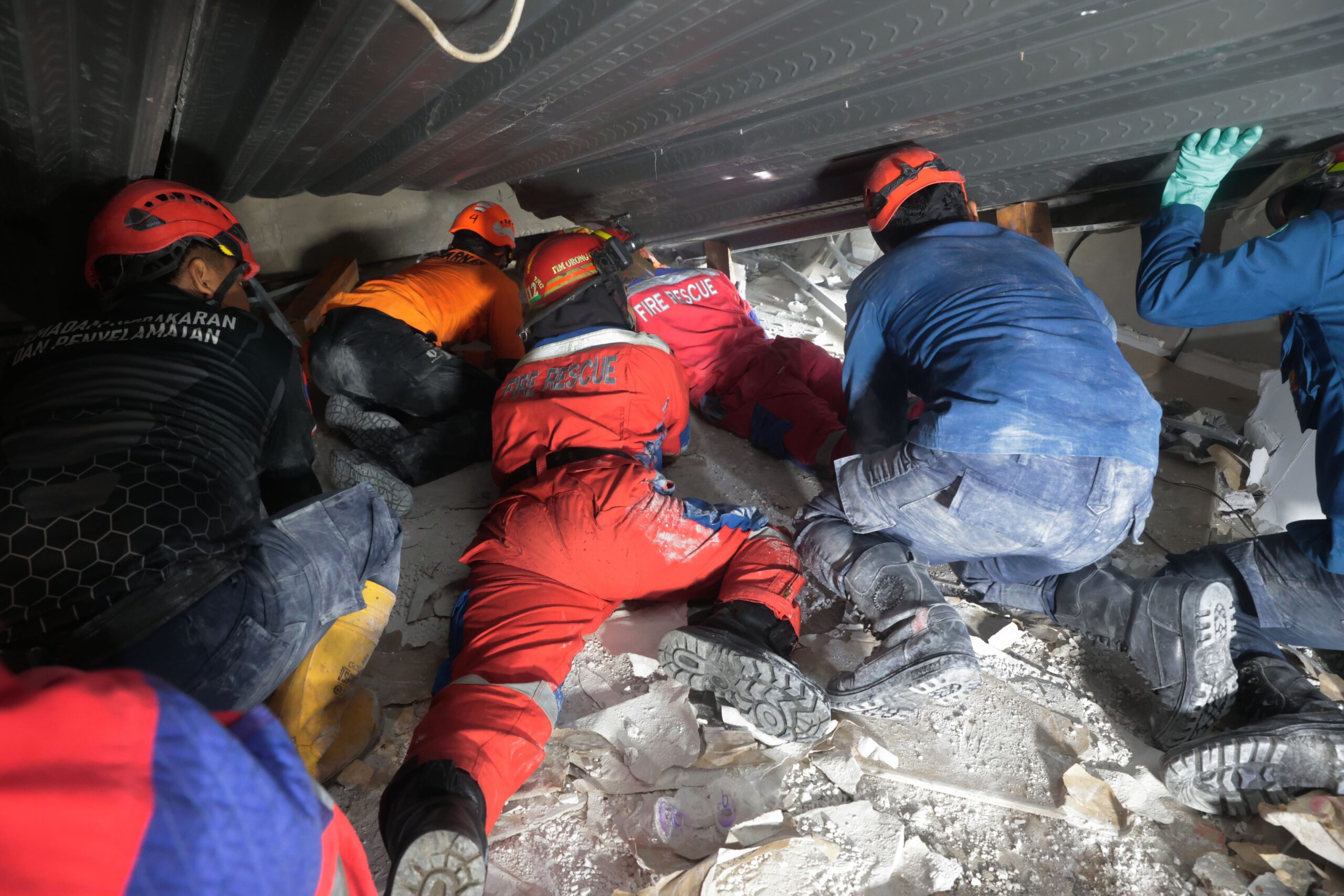A prayer hall at the Al Khoziny Islamic boarding school in Sidoarjo, East Java, Indonesia, collapsed while students were performing afternoon prayers. The building had been undergoing unauthorized expansion, and its weak foundation gave way under added weight.
Tragically, at least three students died and dozens were injured. Rescuers estimate that 38 people remain missing, presumed trapped in the rubble.
Rescue Teams Respond Through the Night
Rescue teams, including soldiers, police, and local emergency crews, worked through dark hours to dig survivors out. They ran oxygen and water to those still trapped under unstable concrete debris. As structures shook and rubble threatened further collapse, rescuers temporarily halted operations, then resumed once they assessed the safety.
They managed to extract several weak and injured students more than eight hours after the collapse. But challenges mounted: shifting debris, unstable sections, and concerns about secondary collapses slowed the search.
Scope of Casualties and Injuries
Authorities evacuated 102 individuals, while nearly 80 were hospitalized with varying severity of injuries. Many victims suffer head trauma, broken bones, and internal injuries. Two of the hospitalized students later died from their wounds. One required amputation, while others underwent emergency surgery.
Students in other parts of the school, especially female students praying separately, escaped more easily and avoided being trapped. Community members, faculty, and local residents joined rescue efforts, carrying injured youths out and transporting them to hospitals.
Causes Under Investigation
Officials say the original prayer hall had two stories. Without proper permits, workers added two more floors. Investigators believe the old foundation could not support the extra load, and the collapse occurred while concrete was curing during construction.
They opened a formal inquiry into building permits, contractors, and structural design. Engineers plan to review construction oversight, safety standards, and accountability for those involved.
Emotional Toll and Community Response
Relatives gathered at the scene and at hospitals, anxiously checking boards listing missing names. Many wept upon seeing their child still listed as trapped. Some begged rescuers, saying Please help my child, as they held the hands of rescue workers.
The community expressed grief and solidarity. Nearby pesantren and local officials offered shelter, medical support, and spiritual comfort. Religious leaders called for calm, unity, and respect for safety in rebuilding.
What Lies Ahead
Rescue efforts will continue until every missing person is accounted for or declared beyond hope. Officials must reconcile urgency with caution since unstable debris still poses danger.
The construction authorities, education regulators, and local government face pressure to enforce stricter building codes, especially in religious and educational institutions. Many will argue this disaster shows how shortcuts in construction and oversight can cost lives.
Meanwhile, victims and families will demand compensation, justice, and long-term support. Recovery, both physical and emotional, will take months or even years.
Conclusion
The collapse of the school hall in Sidoarjo stands as a painful reminder that when foundations fail, both in buildings and in oversight, disaster follows. Rescuers continue to fight against odds, pushing oxygen and hope to those still under the rubble. As investigations proceed and communities heal, Indonesia faces a stark challenge: ensuring that such a tragedy never repeats.
Bonus Read: 13 Recovered After Zamfara Mining Pit Collapse, Over 100 Feared Dead




3 thoughts on “Rescuers Rush Oxygen to Survivors After Indonesia School Collapse”